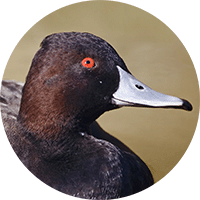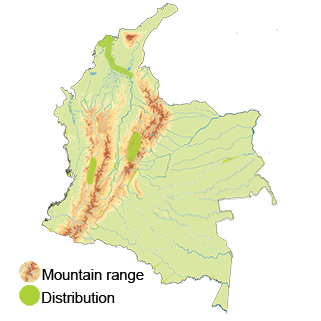Southern Pochard
Appearance: The Southern Pochard is a medium-sized duck measuring about 51 cm - 20 in length. It has a distinctive red eye and a reddish-brown head. The male ha s a grayish body with a black back, while the female has a brownish-grey body. Both sexes have a blue bill with a black tip and gray legs.
Habitat: In Colombia, the Southern Pochard is primarily found in freshwater wetland habitats such as marshes, lakes, lagoons, and slow-moving rivers. They prefer areas with dense emergent vegetation where they can dive for food and find suitable nesting sites. As of 500 m to 2200 m.
Behavior: Southern Pochards are diving ducks known for their ability to submerge and stay underwater for extended periods. They dive to feed on a variety of aquatic vegetation, seeds, insects, and small invertebrates. They are capable of flight and often be seen taking flight in small flocks. Seen in rice fields.
Breeding: Southern Pochards breed during the wet season, typically from April to September. They build nests concealed in dense vegetation near the water's edge. The female lays a clutch of about 6-10 eggs and incubates them for around 25-30 days. After hatching, the ducklings are led by the female to nearby water bodies.
Conservation Status: The Southern Pochard is considered Critically Endangered or Vulnerable by the International Union for Conservation of Nature (IUCN).
Distribution
Santander Department: Wetland areas inander, particularly around Lake Tota and the La Rusia Nature Reserve, are important habitats for Southern Pochard.
Boyacá Department: Wetlands in Boyacá, including Sochagota, Lake Fúquene, and Tota, provide suitable habitats for the Southern Pochard
Cundinamarca Department: wetlands of Cundinamarca, such as Lake Guatav and Sumapaz Páramo, may also support populations of Southern Pochards.
Taxonomy
- Kingdom: Animalia
- Phylum: Chordata
- Class: Aves
- Order: Anseriformes
- Family: Anatidae
- Genus: Netta
- Species: Netta erythrophthalma
Vocalization
Whistles: Southern Pochards are known to produce a variety of whistling calls. These whistles can range from high-pitched to low-pitched and can be used for various purposes, including communication between individuals and during courtship displays.
Grunts: Southern Pochards often emit short, low-pitched grunting sounds. These grunts are typically given as contact calls within a group or in response to disturbance or potential threats.
Quacking: Similar to many other ducks, Southern Pochards also produce quacking sounds. These quacks are often heard during social interactions, such as during courtship or territorial disputes.





